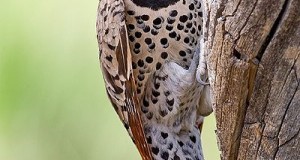 I’ve always viewed the Java Sparrow, Padda oryzivora, (a/k/a Java Rice Bird, Java Finch) as something of a “stepping stone” between the small, typical finches and the larger, less common softbills. Indeed, the moniker “sparrow” fits it well – despite being a true finch, its relatively large size (5 ½ inches), stout build and thick bill lend it a distinctly “un-finch-like” appearance.
I’ve always viewed the Java Sparrow, Padda oryzivora, (a/k/a Java Rice Bird, Java Finch) as something of a “stepping stone” between the small, typical finches and the larger, less common softbills. Indeed, the moniker “sparrow” fits it well – despite being a true finch, its relatively large size (5 ½ inches), stout build and thick bill lend it a distinctly “un-finch-like” appearance.
Range and Status
Native to Bali, Java and neighboring Indonesian Islands, the popularity of these attractive birds has resulted in widespread introductions – Myanmar, Sri Lanka, Zanzibar, Australia and St. Helena’s are only a few of the far-flung locations that support feral populations.
Unfortunately, cultivated rice is a favorite food, an so the “Rice Bird” has been hunted to near extinction in parts of its native range, and is listed as “Vulnerable” by the IUCN and included on Appendix II of CITES.
Java Sparrows as Pets
Java Sparrows are not bred as often as most finches, but are well established in captivity and, in my opinion, deserving of much more attention. The beautiful blue-gray body feathers are nicely set off by a jet black head and tail and white cheeks, and they are very hardy and rather “steady” in demeanor. White, pied, brown and other color morphs are readily available as well.
Despite their formidable bills, Java Sparrows are not overly aggressive; they are gregarious by nature and breeding groups do well in large outdoor aviaries. Smaller birds are also usually well-tolerated. Single pairs have nested in large indoor cages.
Feeding Java Sparrows presents no problems, as they do very well on Finch Seed Mixes supplemented with some rice and frequent feedings of sprouts and greens.
Further Reading and Video
You can read more about Java Sparrows and see a video of them in the wild here.
Java Sparrow image referenced from wikipedia and originally posted by Jason L. Buberel
 That Bird Blog – Bird Care and History for Pet Birds
That Bird Blog – Bird Care and History for Pet Birds




I love Java Finches. I moved to Nevada and have not been to locate any in my area. Do you know of any breeders in the Southwest area of the US? Any help you can give, I really would appreciate.
Hello JoAnn, Frank Indiviglio here.
Thanks for your interest in our blog. Your best option would be to check the classifieds of the National Finch and Softbill Society; I don’t see any listed now, but breeders offering less common birds such as troupials, tanangers, etc. should be able to direct you, as it’s a fairly small specialty.
Check also the breeders listed by the American Federation of Aviculture and the Avicultural Society of America.
Good luck and please let me know how you do.
Best regards, Frank Indiviglio.